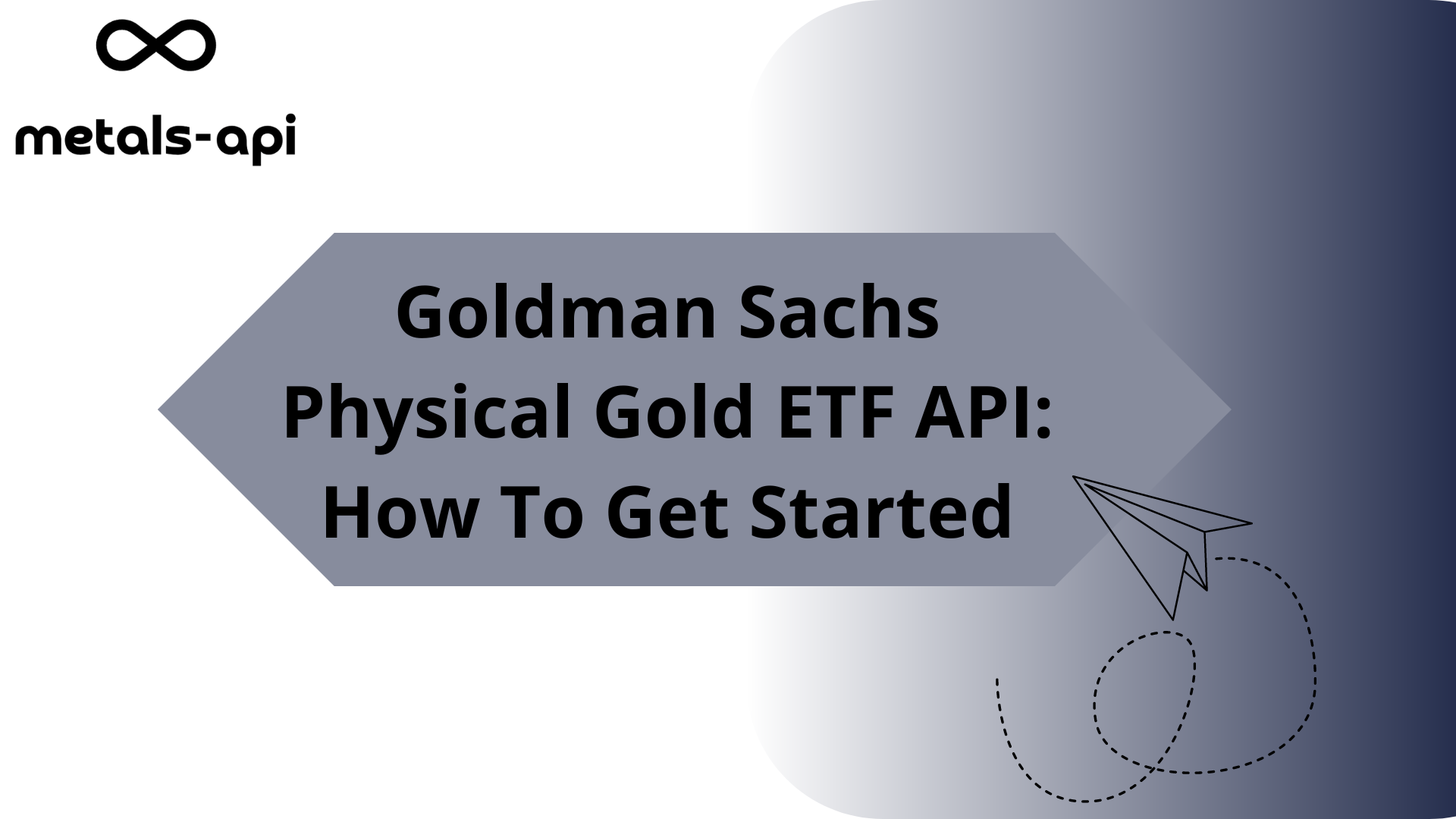Goldman Sachs Physical Gold ETF API: How To Get Started

The Goldman Sachs Physical Gold ETF API and its relevance in the investment landscape. Briefly mention Goldman Sachs' reputation in the financial world and the growing interest in gold investments.
Investing in gold has long been seen as a safe and dependable technique for diversifying portfolios and mitigating market volatility. The Goldman Sachs actual Gold ETF (Exchange-Traded Fund) allows investors to acquire exposure to actual gold without directly owning or storing the precious metal. In today's digital era, having access to real-time gold ETF rates and market data is critical for making sound investing decisions.
Understanding the Goldman Sachs Physical Gold ETF:
The first step in getting started with the Goldman Sachs Physical Gold ETF API is to familiarize yourself with the API documentation. This documentation provides detailed information about endpoints, parameters, authentication methods, and data formats. Take the time to read through the documentation carefully to understand how the API works and what functionalities it offers.
Introduction to APIs and Financial Data:
To access the API, you'll need to register for an API key or token. This key serves as your authentication credential and allows you to make requests to the API endpoints. Follow the registration process outlined in the API documentation to obtain your API key and set up your API access.
Getting Started with Metals-API:
With successful testing, you're ready to integrate the Metals-API into your application. Depending on your development environment, you may use programming languages like Python, JavaScript, or Java to make API calls and retrieve data. Follow the integration guidelines provided in the API documentation for a seamless integration process.

Handling API Responses:
As you integrate Metals-API into your application, ensure that you have mechanisms in place to handle API responses effectively. This includes error handling for failed requests, parsing and formatting data from API responses, and implementing caching strategies to optimize API performance and reduce latency.
Implementing Data Visualization:
Once you've retrieved data from Metals-API, consider implementing data visualization components in your application. Visual representations such as charts, graphs, and dashboards can help users analyze and interpret the gold-related data more effectively, enhancing user experience and decision-making.
Monitoring And Maintenance:
After integrating the API, regularly monitor Metals-API usage, performance metrics, and any updates or changes from the API provider. Stay informed about API versioning, deprecation notices, and new features to ensure that your application remains functional and up-to-date.
This is an API Response by Metals-API
{"data":{"success":true,"timestamp":1707937620,"date":"2024-02-14","base":"INR","rates"Conclusion:
In conclusion, getting started with the Metals-API involves understanding the API documentation, registering for API access, exploring endpoints, testing API requests, integrating the API into your application, handling API responses, implementing data visualization, and monitoring API usage. By following these steps and leveraging the capabilities of the API, you can enhance your applications with valuable gold-related data and provide users with actionable insights for their trading and investment activities.